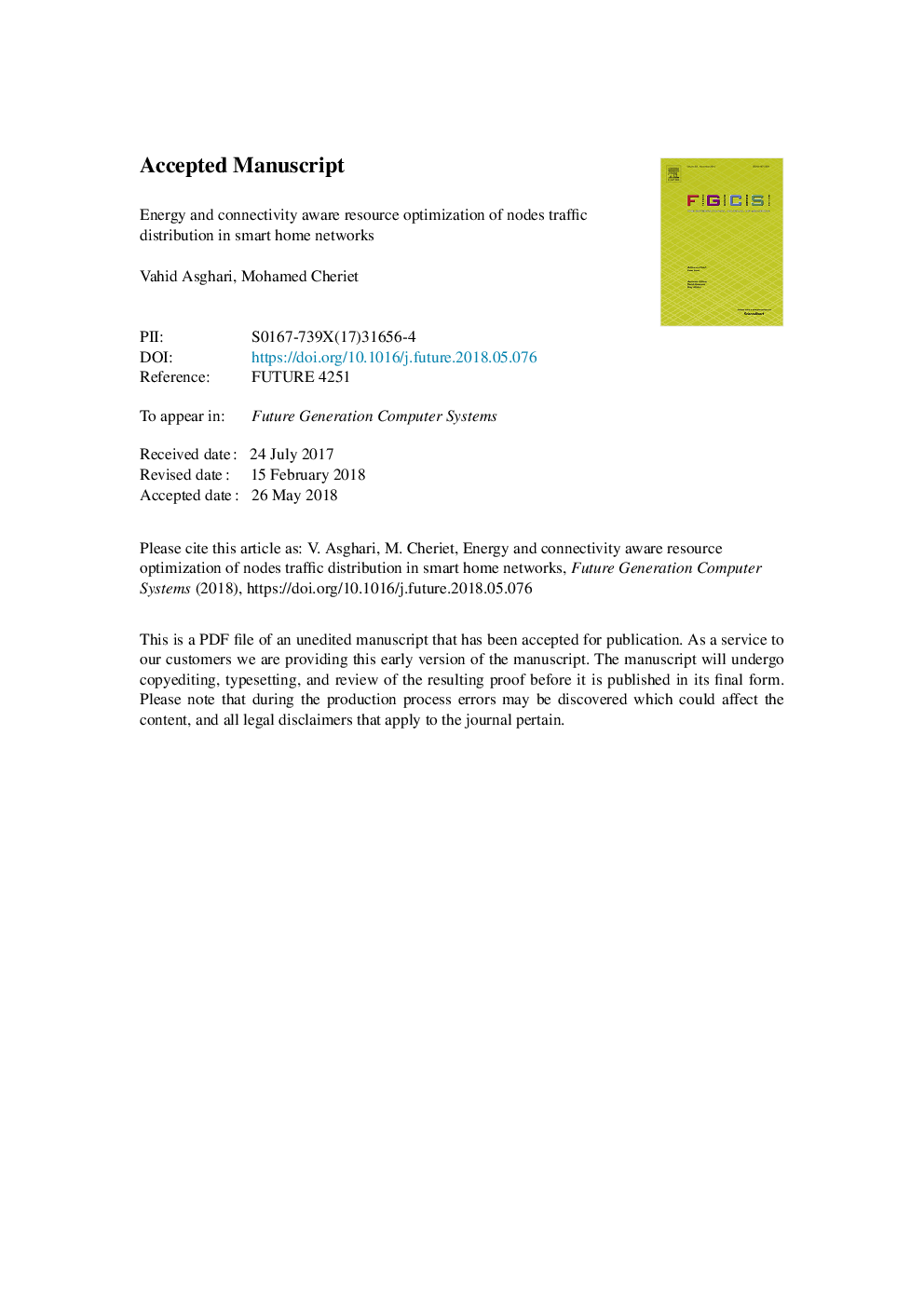| Article ID | Journal | Published Year | Pages | File Type |
|---|---|---|---|---|
| 6872894 | Future Generation Computer Systems | 2018 | 25 Pages |
Abstract
Smart home network is a network of connected devices and sensors in a house or a group of apartments in a building. It is expected that a huge number of sensors and access points (APs) are utilized in a smart home network in an integrated way to fulfill the necessary functionalities in homes and buildings. In this regard, energy optimization and providing network connectivity have an extremely important role in enabling smart home network in its mission. In this paper, we investigate the optimal measures that can be used to more optimally manage the sensor nodes traffic distribution between the available APs in a smart home network while considering joint constraints on the average energy consumption of the nodes and also the full coverage and connectivity across the network. In particular, we consider a typical smart home network scenario with multiple number of sensor nodes and APs distributed within the network area where the sensors have the freedom to choose between any neighboring APs for data communication that can better improve the energy efficiency and connectivity of the network. Accordingly, we consider constraints on the average battery consumption of the sensor nodes and also the energy consumption at the APs to improve energy efficiency and life-time of the smart home network. Moreover, an additional constraint is considered to guarantee the necessary full network connectivity and coverage across the proposed smart home network. In this regard, we consider a cost model for a typical smart home network and form an optimization problem that aims at minimizing the cost of the network while taking into account aforementioned constraints on the consumed energy by the sensor nodes and APs, and also addressing the coverage and connectivity requirements in the network. Finally, the benefits of using the proposed optimization problem in smart home networks are discussed and numerical results and comparisons regarding various operating scenarios are provided.
Related Topics
Physical Sciences and Engineering
Computer Science
Computational Theory and Mathematics
Authors
Vahid Asghari, Mohamed Cheriet,
